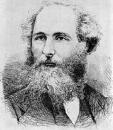| |

Home
Contact Info
Course Info
Calendar
Homework
Lecture Notes
|
|
|
|
PHY 415: Electromagnetic Theory I
Prof. S. Teitel stte@pas.rochester.edu ---- Fall 2017
Problem Set 2
Due Thursday, October 5, turn into the homework locker by 4pm. Homework lockers are in the BL 1st floor by the entrance to the tunnels.
- Problem 1 [10 points]
Prove this mean value theorem: For charge-free space in the electrostatic limit, the value of the electrostatic potential φ at any point in space is equal to the average of the potential over the surface of any sphere centered on that point.
Hint: Use the fact that where there are no charges ∇2φ=0. Then relate the averge φ over the surface of a shpere to the flux of electric field through the surface.
Functions which satisfy Laplace's equation are called harmonic functions; harmonic functions obey the above mean value theorem (in other words, you have to prove this mean value theorem, you cannot simply say it is true because harmonic functions obey it!).
- Problem 2 [10 points]
Prove Green's reciprocation theorm: If φ is the potential due to a volume charge density ρ within a volume V and a surface charge density σ on the conducting surface S bounding the volume V, while φ' is the potential for the same geometry but for a different ρ' and σ', then
∫Vd3r ρφ' + ∫Sda σφ' = ∫Vd3r ρ'φ + ∫Sda σ'φ
Hint: Consider Green's 2nd identity.
- Problem 3 [10 points]
Two infinite grounded parallel conducting planes are separated by a distance d. A point charge q is placed between the planes. Use Green's reciprocation theorem to prove that the total induced charge on one of the planes is equal to -q times the fractional perpendicular distance of the point charge from the other plane. (Hint: As your comparison electrostatic problem with the same surfaces choose one whose charge densities and potential are known and simple.)
- Problem 4 [10 points]
a) In lecture we solved the problem of the electric field from a spherical shell of radius R with uniform surface charge density σ=q/(4πR2). Consider now the problem where this shell is of finite thickness d. That is, there is a uniform charge density ρ in a spherical shell of finite thickness from radius R to radius R+d, such that the total charge on this shell is q. Find the potential φ(r) by solving Poisson's equation (there may be easier ways to do it, but do it this way!), then take the gradient to get E(r). Sketch φ(r) and E(r) vs r. Now take the limit d→0 keeping ρd=σ constant. Compare your result with the case of the infinitesmally thin shell done in lecture.
b) Consider an infinitesmally thin spherical shell of radius R with a total charge q uniformly distributed over its surface, and a concentric infinitesmally thin spherical shell of radius R+d with total charge -q uniformly distributed over its surface. Find the potential φ(r) by solving Poisson's equation for this geometry, then take the gradient to get E(r). Sketch φ(r) and E(r) vs r. Now take the limit d→0 keeping qd constant. What do you find? This is the limit of an infinitesmally thin dipole layer.
- Problem 5 [5 points]
Consider a point charge q a distance d in front of a plane conducting slab of thickness w, as shown below. The slab has a fixed net charge Q on it. Find the electric field on both sides of the slab. Find the force between the charge q and the slab. For this problem, assume that the side area of the slab A is finite, so that the average surface charge Q/2A is finite; however you make work the problem out ignoring edge effects, i.e. assuming the plane is effectively infinite.

|
|